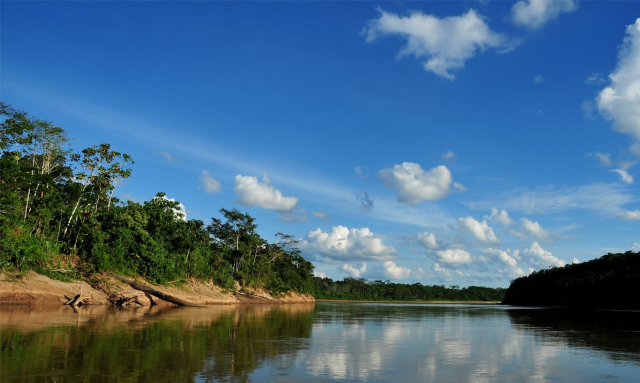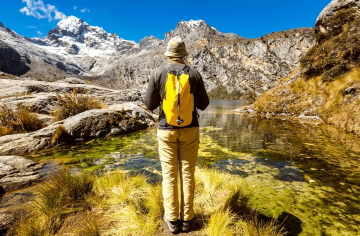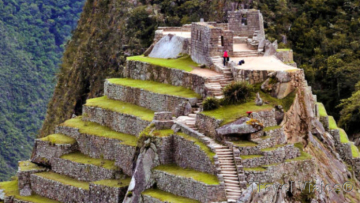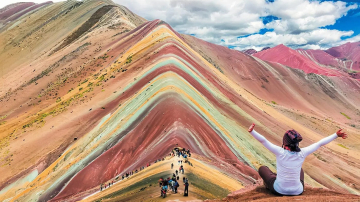Peru's national parks are a window into the country's immense biodiversity and cultural richness. From the depths of the Amazon rainforest to the heights of the Andes , these protected spaces not only shelter unique species , but also offer unforgettable experiences for travelers seeking adventure and connection with nature.
With more than 70 protected areas spread across the country, national parks are essential for sustainable tourism in Peru. This article will take you to explore some of the most outstanding parks , such as Manu National Park, Huascarán and Bahuaja-Sonene , showcasing their beauty and the importance of their conservation.
1. Manu National Park: The Paradise of Biodiversity
Recognized as a World Heritage Site by UNESCO , Manu National Park is one of the most biodiverse places on the planet. Located between the regions of Cusco and Madre de Dios , this park is home to more than 1,000 species of birds, 200 species of mammals, and thousands of plants.
The experience of visiting Manu includes river navigation, wildlife observation in its natural habitat and visits to indigenous communities that have inhabited the region for centuries. It is an ideal destination for nature and photography lovers. To access it, it is recommended to do so with an authorized tour operator, since the park has restricted areas to ensure its conservation.
2. Huascarán National Park: Adventure in the Cordillera Blanca
Huascarán National Park , located in the Ancash region , is a paradise for trekking and mountaineering enthusiasts . This park is home to Huascarán , the highest mountain in Peru , and glacial lagoons such as the famous Laguna 69.
With over 400 lagoons and 30 snow-capped peaks, Huascarán offers a diversity of impressive landscapes . It is also a refuge for endangered species such as the spectacled bear and the Andean condor . Activities include hiking along the famous Santa Cruz route and excursions to archaeological sites such as Wilcahuain. Visiting the park requires a good level of acclimatization due to the altitude.
3. Bahuaja-Sonene National Park: A World to Discover
Located in the Madre de Dios and Puno regions , Bahuaja-Sonene National Park is the only one in Peru that protects tropical savanna ecosystems. This park is known for its diversity of landscapes , ranging from humid forests to open grasslands.
Its inhabitants include species such as the jaguar, the giant otter and the harpy eagle . It is also an excellent destination for adventure tourism , with activities such as kayaking on its rivers, bird watching and camping under starry skies. Its access is more remote than other parks, but its natural beauty rewards visitors willing to explore the unexplored.
4. Cerros de Amotape National Park: Unique Landscapes in Northern Peru
In the Tumbes region , the Cerros de Amotape National Park is an example of equatorial dry forest, a rare and little-explored ecosystem. This park protects endemic species such as the anteater and the Sechura fox, as well as a wide variety of birds.
Visitors can enjoy hiking along its trails, observing flora and fauna, and cycling tours. It is ideal for those seeking a more intimate connection with nature away from traditional tourist circuits.
5. Abiseo River National Park: History and Nature in Harmony
The Abiseo River National Park in San Martín combines biodiversity with impressive archaeological value. This park is home to more than 30 archaeological sites, including remains of pre-Incan cultures such as the Chachapoya.
It is also home to unique species, such as the yellow-tailed woolly monkey . Access is limited to protect its fragile ecosystem, but some tour operators offer controlled visits. It is a perfect example of how tourism can coexist with conservation.
6. Importance of National Parks for Responsible Tourism
National parks not only preserve biodiversity , but also encourage sustainable tourism. Every visit contributes to the development of local communities and the conservation of these spaces . However, it is essential to follow good practices, such as respecting park rules, avoiding littering and hiring authorized local services.
Responsible tourism also involves educating ourselves about the importance of these places. Each park tells a unique story of interaction between humans and nature, and visiting them is an opportunity to be part of their protection.
Peru's national parks are much more than tourist destinations ; they are sanctuaries that protect the country's biodiversity and cultural heritage. From the vastness of Manu to the heights of Huascarán, these spaces invite travelers to marvel at nature while contributing to its preservation.
Visiting these parks is not only an enriching experience, but also a commitment to sustainability and respect for Peru's natural wealth. If you are looking for authentic adventures, stunning landscapes and tourism that leaves a positive mark , Peru's national parks are the perfect destination for you.
We invite you to learn more about Peru here: Blogs from Peru.




